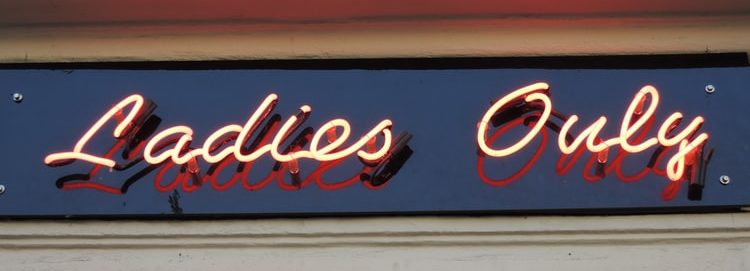The first female-only art gallery: equality or positive discrimination?
The struggle for gender equality covers all political, economic and social spectrums. However, to this day there remains resistance in the world of art. Despite the efforts of feminist groups such as the Guerrilla Girls in the 1980s, there has been little change in the way female artists are represented.
In a recent report commissioned by the Freelands Foundation, 68% of artists represented in major London commercial galleries are men, even though women make up the majority of creative arts graduates. In addition to this, a data survey of the permanent collections of 18 prominent art museums in the U.S. found that of over 10,000 artists, 87% are male, and 85% are white.
However, the war is not yet lost. This August, Australia opened its first contemporary art gallery focusing exclusively on female artists. The only question is, is this a move in the right direction for gender equality, or is it a reflection on how divided the art world has become?
I’ve been witness to female artists being often overlooked, not put forward for important exhibitions, institutions predominantly considering male artists for collections
Lisa Fehily
Before we can judge whether this new initiative will have a positive or negative effect on gender discrimination in the art world, it is important to understand the message behind it. The Finkelstein Gallery, which opened in Melbourne on 29 August, was founded by the experienced art consultant Lisa Fehily. “Having worked with artists for many years – artists, collectors, and institutions – I’ve been witness to female artists being often overlooked, not put forward for important exhibitions, institutions predominantly considering male artists for collections,” Fehily told The Guardian. The inspiration for this project was also taken from similar initiatives including the National Gallery of Australia’s #knowmyname campaign, and the work of the National Museum of Women in the Arts in Washington D.C.. According to Fehily, “there’s still a lot of work to be done for female artists”, but this project is a good start.
One of the more controversial aspects of the new Finkelstein Gallery is that it actively excludes the work of male artists. Some have even described it as an act of positive discrimination, and a terrible example of gender equality. Fehily has said she is reluctant to call herself a feminist, and that she isn’t interested in equality; rather, she wants female artists to be valued “for who they are”. “I’m a feminist in that I feel that women need more opportunities in the industry. We’ve been overlooked”.
Another important issue which the gallery intends to promote is the development of funding for female artists in Australia. The Finkelstein Gallery will represent a “small, exclusive” group of ten female artists, of whom eight are Australian. Fehily hopes that by working with a smaller cohort, she can promote the artists’ work on a more global scale that mirrors that of traditional gallery representation, so they too “can leave their legacy”.
Every effort towards gender equality is a form of positive action, but the question of how inclusive art should be remains a difficult one
But could a project like the Finkelstein Gallery exist in the UK? Well, the answer is yes! In January of this year, the Mayfair gallery Richard Saltoun announced its year-long programme of exhibitions by female artists titled “100% Women”. Since opening in 2012, the gallery has maintained equal representation in the number of male and female artists they exhibit, placing it in the mere 5% of London galleries with such a parity. When questioned on the new programme of exhibitions, the gallery’s founder Richard Saltoun said: “Our aim is to ensure the female artists who have made a great impact on the development of contemporary art are duly noted in art history”. Regarding their future projects, Mr. Saltoun added: “Following 100% Women, our programme will extend beyond gender equality, seeking to shine light on under-represented figures despite their race, nationality, religion or geographical location – we will continue developing our programme and taking on new artists with this in mind.”
Every effort towards gender equality is a form of positive action, but the question of how inclusive art should be remains a difficult one. On the one hand, it is important to showcase the work of female artists as part of a global recognition and understanding of a woman’s voice. However, if this is achieved through segregation, can it really be considered a move towards equality? Perhaps this is unrealistic, but I would like to see a world where gender, class, race and sexual orientation does not determine where your work can or cannot be shown. Art need not be faceless, but it must not discriminate.

Comments